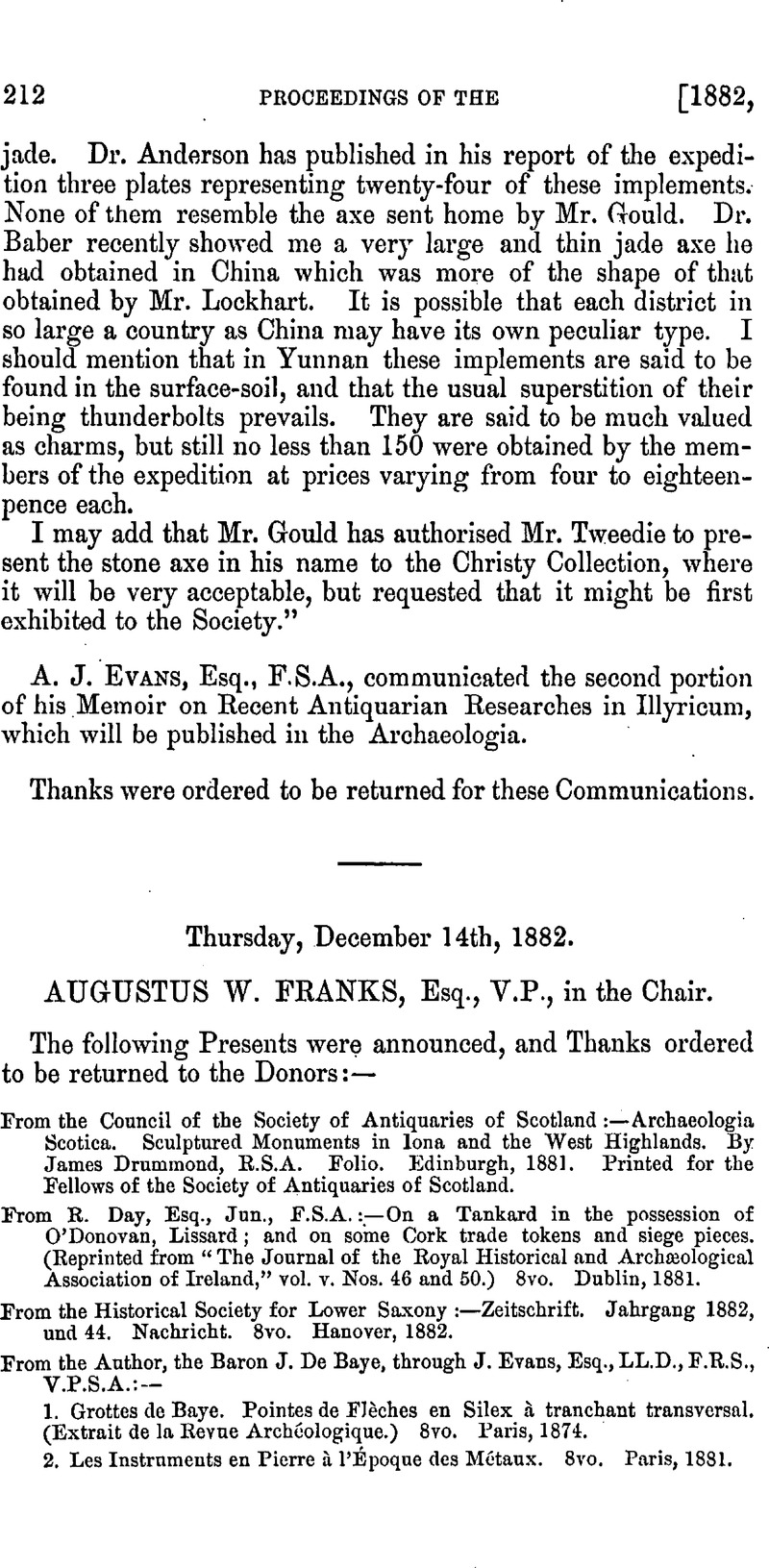No CrossRef data available.
Article contents
Thursday, December 14th, 1882
Published online by Cambridge University Press: 10 May 2010
Abstract

- Type
- Proceedings
- Information
- Copyright
- Copyright © The Society of Antiquaries of London 1883
References
page 214 note * The name of Strigner does not occur in the list of members of the Clockmakers' Company recently published by Mr. Octavius Morgan in the Archaeological journal, vol. xl. p. 193.
page 217 note * Evagrins (Edit. Paris, 1673), p. 551.
page 217 note † Cited by Molanns, De Historia SS. Imaginum, p. 47, in foot-note. The Pope writes : “Licet nos opihionem illam, quâ quidam Greci estimant quod spiritus Beatæ Virginis in prædictâ imagine requiescat (propter quod ipsam forte plus debito venerarentnr) tanquam superstitiosam minime approbemus.
page 219 note * In the subject of the Adoration of the Magi, in the Benedictional of St. Ethelwold, the Virgin is also enthroned, and the Child is also in manly costume. The same general idea is also observed in the composition ; but the Greek influence is very manifest in this most interesting MS., which may account for the marked fixity of types.
page 219 note † Durandus, Rationale Div. Off. lib. i. cap. iii. would seem to imply something of the kind in the following passage : “Salvatoris Imago picta in præsepio, rememorat Nativitatem: depicta in matris gremio puerilem ætatem.”
page 219 note ‡ There is a woodcut of this painting in Wey's Rome.
page 221 note * Molanus, Hist. SS. Imaginum (edit. Lovanis, 1771), pp. 92, 23. ‘O homo, securum habes accessum ad Deum, ubi Mater ante Filium, Filius ante Patrem. Mater ostendit Filio pectns et ubera : Filius ostendit Patri latus et vulnera. Ibi non potest esse ulla repulsa, ubi tot sunt charitatis insignia.” Verum, sicut figurate intelligo verba Bernardi, sic Imaginem, ex eis verbis desumptam, intelligendam arbitror.
page 221 note † See Journal of the British Archæological Association, vol. ix. pi. 6. The subject is of later date than that of Great Canfield, and very inferior in point of execution, but it shows the same general arrangement and principles involved.




